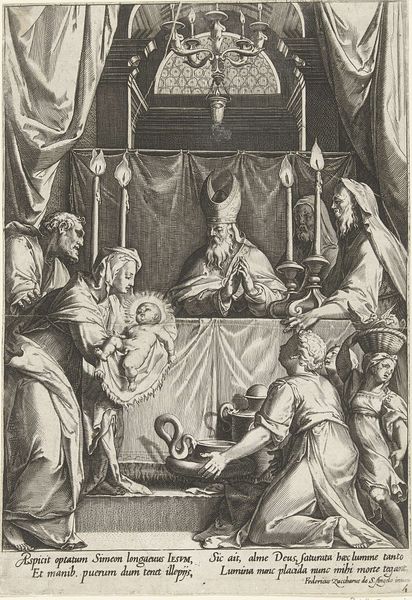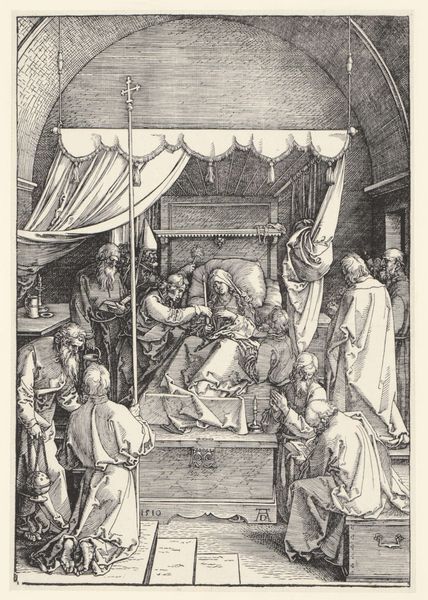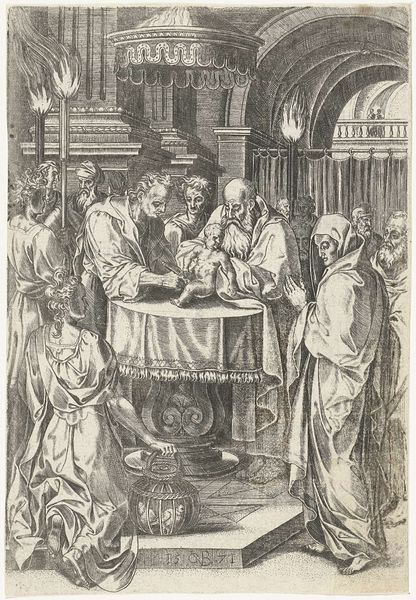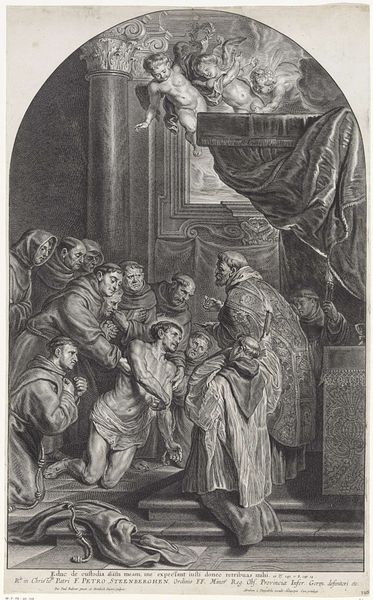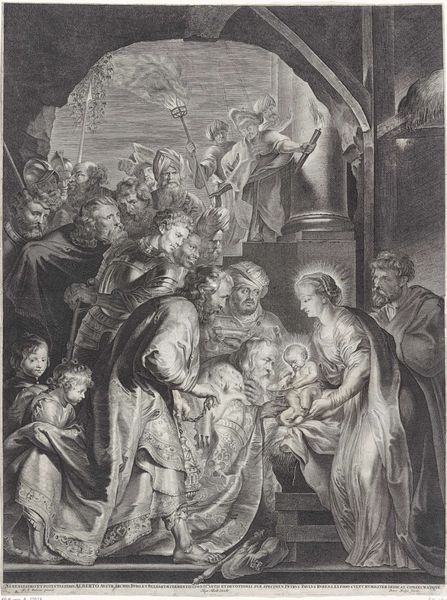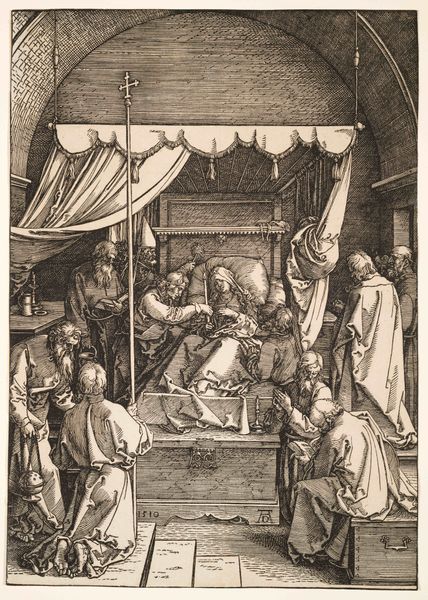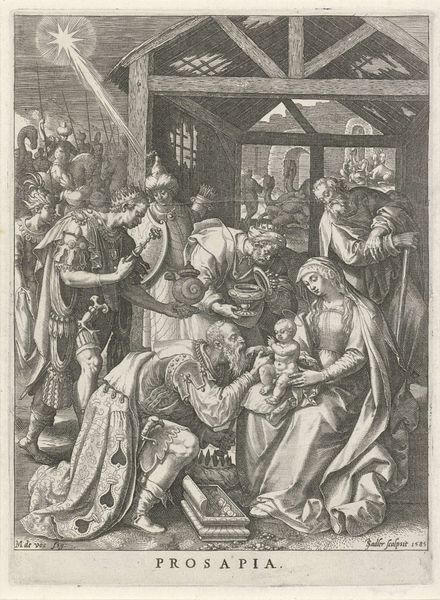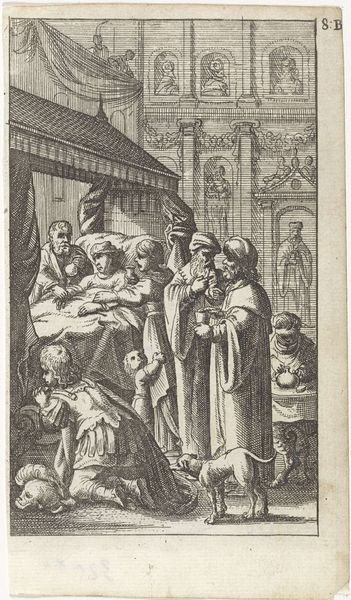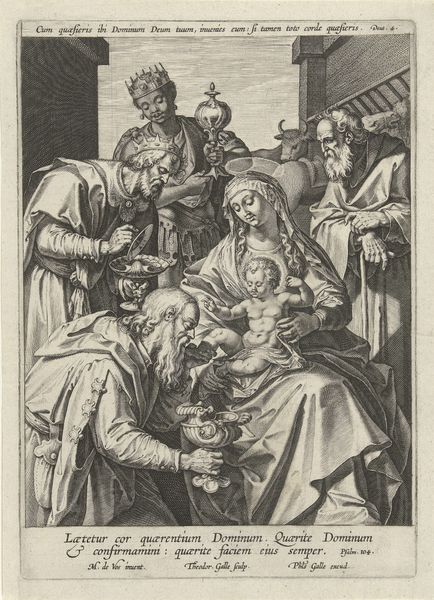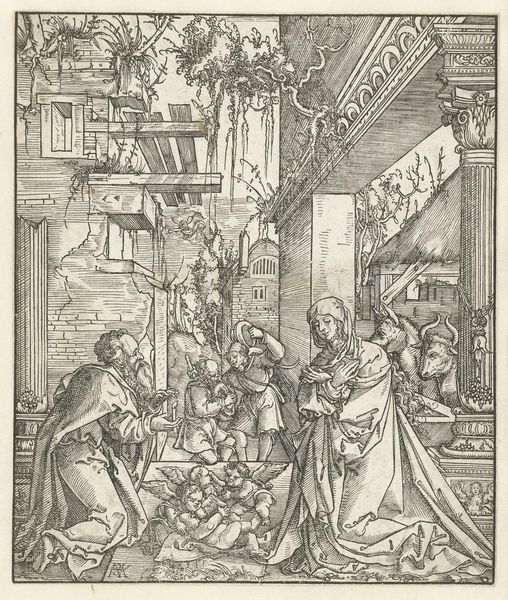
Dimensions: height 310 mm, width 196 mm
Copyright: Rijks Museum: Open Domain
Editor: We’re looking at Cornelis Cort’s "Presentation of Christ in the Temple," an engraving dating from around 1568 to 1578. The meticulous line work really creates a sense of depth, almost a stage-like setting. What do you see as most significant about its composition? Curator: Formally, I am struck by the organization of figures and the implied narratives contained therein. The linear precision of Cort’s engraving technique structures the space. Observe the symmetry; the composition is carefully balanced. The eye is led to the Christ child, the nexus of the visual arrangement. Note also the strategic employment of chiaroscuro which draws the eye through shadow and illumination to discern Cort's subject. Editor: So, it’s less about the story itself and more about how Cort presents it through the lines, the light, and the arrangement of the figures? Curator: Precisely. The symbolic resonance of the subject, the presentation, is certainly there. The artist employs formal tools: composition, balance, contrast, tonality—to evoke narrative. Without careful consideration to such aspects, there's risk of aesthetic disorder; the piece falters. Does the subject gain strength if those formal relations break? What new aesthetic truths become apparent, if any? Editor: I see, that's fascinating! Thinking about the artistic elements themselves opens up a whole new way of engaging with the print. Curator: Indeed. By focusing on the formal relationships—the semiotic and structural elements within the work itself—we can gain a deeper appreciation for the artist's intention and its overall impact. I find that by decoding the intrinsic relationships, an artist achieves not only their individual pursuits but simultaneously and symbiotically that of humanity. This provides context, and from context there emerges understanding, thus insight. Editor: I'll be sure to keep this in mind going forward. Curator: An approach I suggest to all those hoping to not simply passively observe art, but actively learn *from* it.
Comments
No comments
Be the first to comment and join the conversation on the ultimate creative platform.
